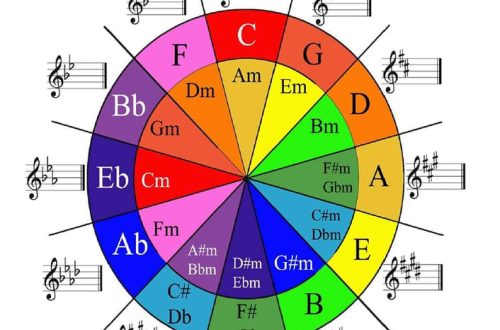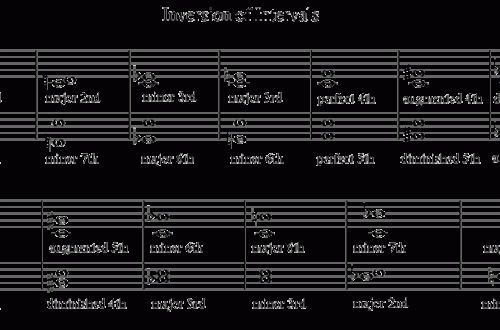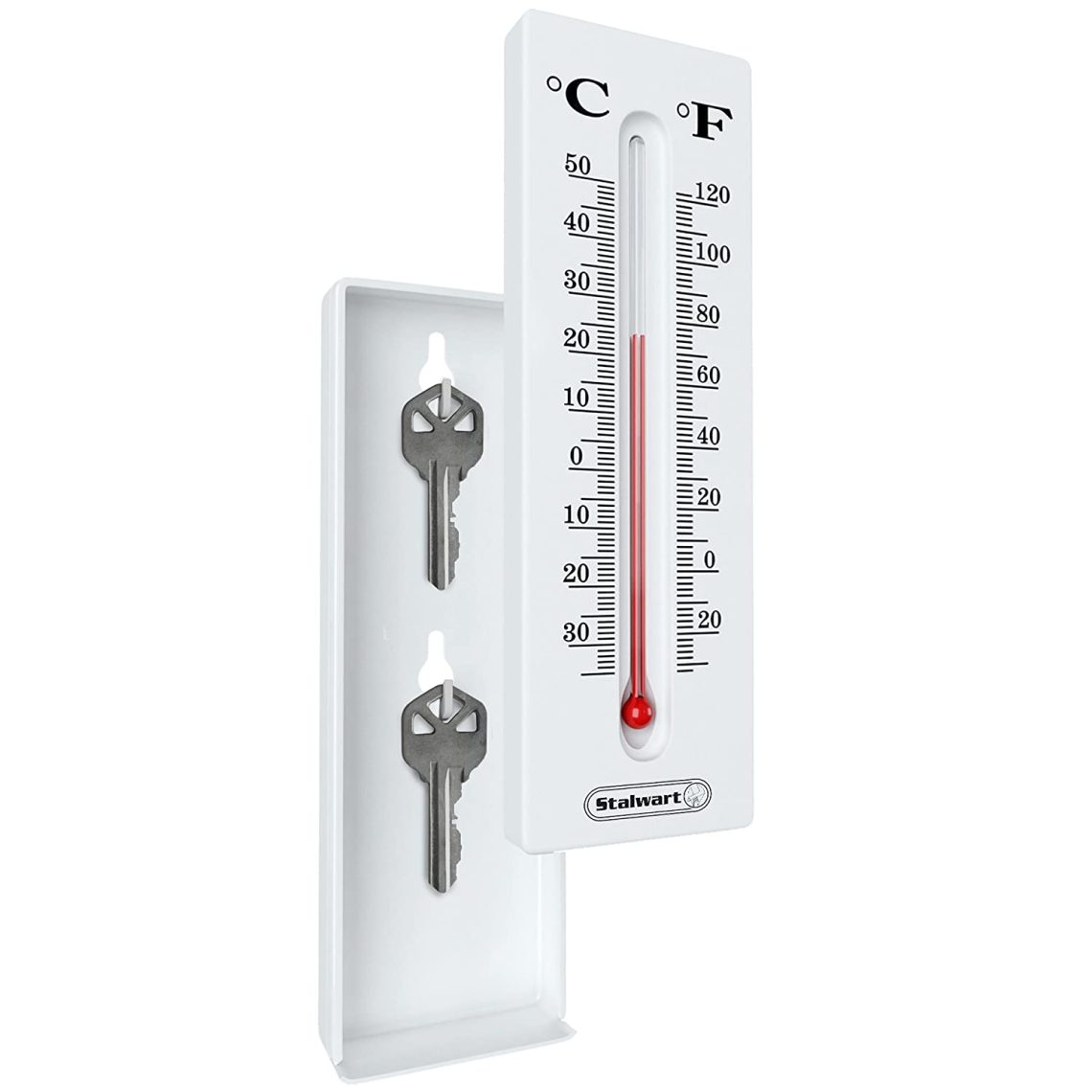
The thermometer of keys is an assistant to the musician!
Contents
The key thermometer is a visual diagram for working with all thirty musical keys. The tones are divided into two groups, one – hot, hot, correspond to the plus scale of the thermometer; others, on the contrary, are cold, they can be conditionally tied to a minus scale.
Sharp keys are considered hot, and the more sharps in the key, the hotter the “temperature” on the thermometer, the higher the step it occupies on the scale. Naturally, low, flat keys will be cold, and the more flat keys, the lower the “temperature” will be, and the lower you need to look for the key on the scale.
In the center of the thermometer are located and, as it were, correspond to “zero” two tonalities without signs (they have “zero” signs) – C major and A minor parallel to it. Everything is logical, natural and familiar. In some ways, this whole scheme is similar to a circle of fifths, only opened, in which the sharp and flat branches are straightened and tied to a column.
Who invented the tone thermometer?
The thermometer of keys was invented by the famous composer and teacher Valery Davydovich Podvala. His invention can be found in the textbooks for children “Let’s compose music.”
With the help of a thermometer, the composer tells the guys who have begun to study music the fastest and surest ways to find subdominants, dominants, related keys, and many other things. The musicians really liked the thermometer of keys, and a lot of people learned about it.
On the colorful thermometer of V. Podvaly, we see that the major keys occupy the red half of the scale, and the minor keys occupy the blue half. In the middle are the keys of C major and A minor, above them are all the sharp scales, and below them are the flat ones. The numbers indicate how many signs are in a particular key.
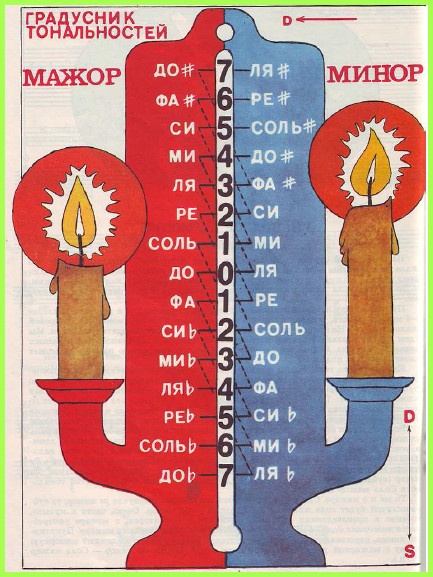
In order to name the signs accurately, you will have to remember the order of sharps (fa, do, sol, re, la, mi, si) and the order of flats (si, mi, la, re, sol, do, fa), since the thermometer only indicates the number of sharps and flats, but does not name them. We ourselves must choose the right ones.
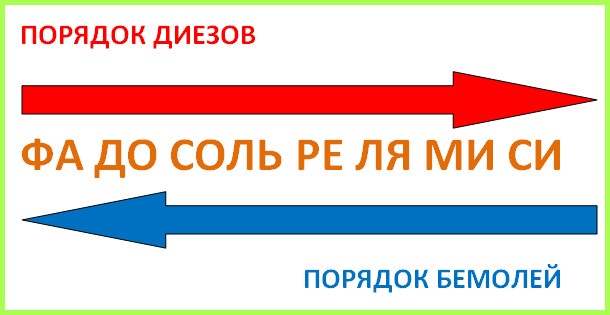
Improved tone thermometer
In order to be able to peep on the thermometer not only the number of sharps and flats in one of the keys, but also to see what kind of signs these will be, we decided to make and present to you its improved model.
In the picture you can see a thermometer with a double scale. The right side shows the number of characters in a particular key. On the left side are written: up the order of sharps (FA DO SOL RE LA MI SI), and down – the order of flats (SI MI LA RE SOL DO FA).
 In order to name the signs of tonality, we find it on the thermometer, look at the number of signs, and then rise or fall from zero along the left scale, naming all the signs until we get to the chosen tonality. A sharp or flat, which is set opposite the desired key, will be the last in it.
In order to name the signs of tonality, we find it on the thermometer, look at the number of signs, and then rise or fall from zero along the left scale, naming all the signs until we get to the chosen tonality. A sharp or flat, which is set opposite the desired key, will be the last in it.
For example, the we want to know how many characters are in the key of B major. We find it on a thermometer – it is among the sharp systems, it has 5 sharps, namely (from “zero”): fa, do, sol, re and la.
Another example – let’s figure it out with the key of D-flat major. It is written on the “frosty”, flat side, there are five signs on the thermometer, namely (we go down from “zero”): si, mi, la, re and salt.
Below we will present you another version of the thermometer – with letter symbols for tonalities. You can use any one you like more in your studies. You can download both thermometers for printing HERE.
How else can you use a tone thermometer?
As you know, you can remember the key signs in the keys without a thermometer, for example, according to the “major rules”. “Major rules” we here called the rules for quickly finding signs in major keys. We remind you of them:
- in sharp keys, the last sharp is a step lower than the tonic;
- in flat keys, the tonic is hidden behind the last flat (that is, it is equal to the penultimate flat).
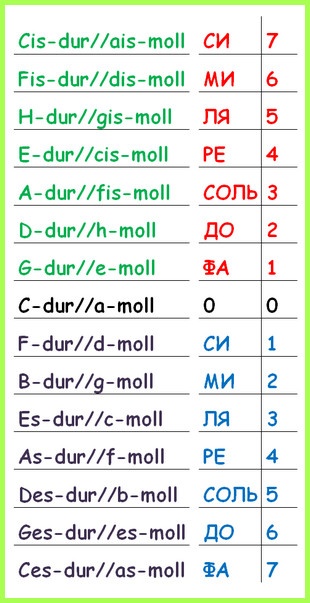
In addition, all the tonalities are remembered with time and even very quickly, so that the need to peep somewhere simply disappears. So how can you use a tone thermometer?
First, the it is very convenient to look at the difference in signs on it. We take two tonalities, calculate how many degrees they differ, and get the answer. For example, the keys of D major and F major differ by three signs. And the keys C-flat major and C-sharp major – by 14 characters.
Second, the using a thermometer, you can easily find the main steps – the subdominant (this is the name of the IV step in harmony) and the dominant (this is the name of the fifth step). The dominant will be one degree higher from the tonic, and the subdominant one degree lower. For example: for C major (tonic C), the dominant will be the sound “G” and the dominant key will be G major, and the subdominant will be the sound “F”, the subdominant key will be F major.
Third, The thermometer allows you to quickly find the main related tonalities. There are only six keys of the first degree of relationship (we will talk about this in detail a little later), and five of them can be identified almost instantly! How? One related tone is at the same level of the thermometer as the one for which we are looking for “relatives”, two more are a degree higher, and two more are a degree lower. It is inconvenient to look for the sixth “secret” tonality on a thermometer (we will teach you this later).
For example, the find five related keys for E minor. These will be: G major (at the same “temperature” level), D major and B minor (one degree higher), C major and A minor (one degree lower). The sixth key will be B major (how to search while we do not speak).
Or another example: let’s look for the nearest “relatives” for E-flat major. These will be: C minor (in the same cell), B-flat major and G minor (above), as well as A-flat major and F minor (below). The sixth key here is A-flat minor (something has gone somewhere).
Thus, the application of our thermometer can be quite wide. If you know of any other ways to work with such a scheme, then please write about it in the comments to this article. And also ask your questions if you have any.
Now let’s take a musical break. We invite you to listen to the wonderful music of the great Ludwig van Beethoven. You will hear a sonata for violin and piano No. 5 called “Spring”
Beethoven – Sonata No. 5 “Spring” for violin and piano



